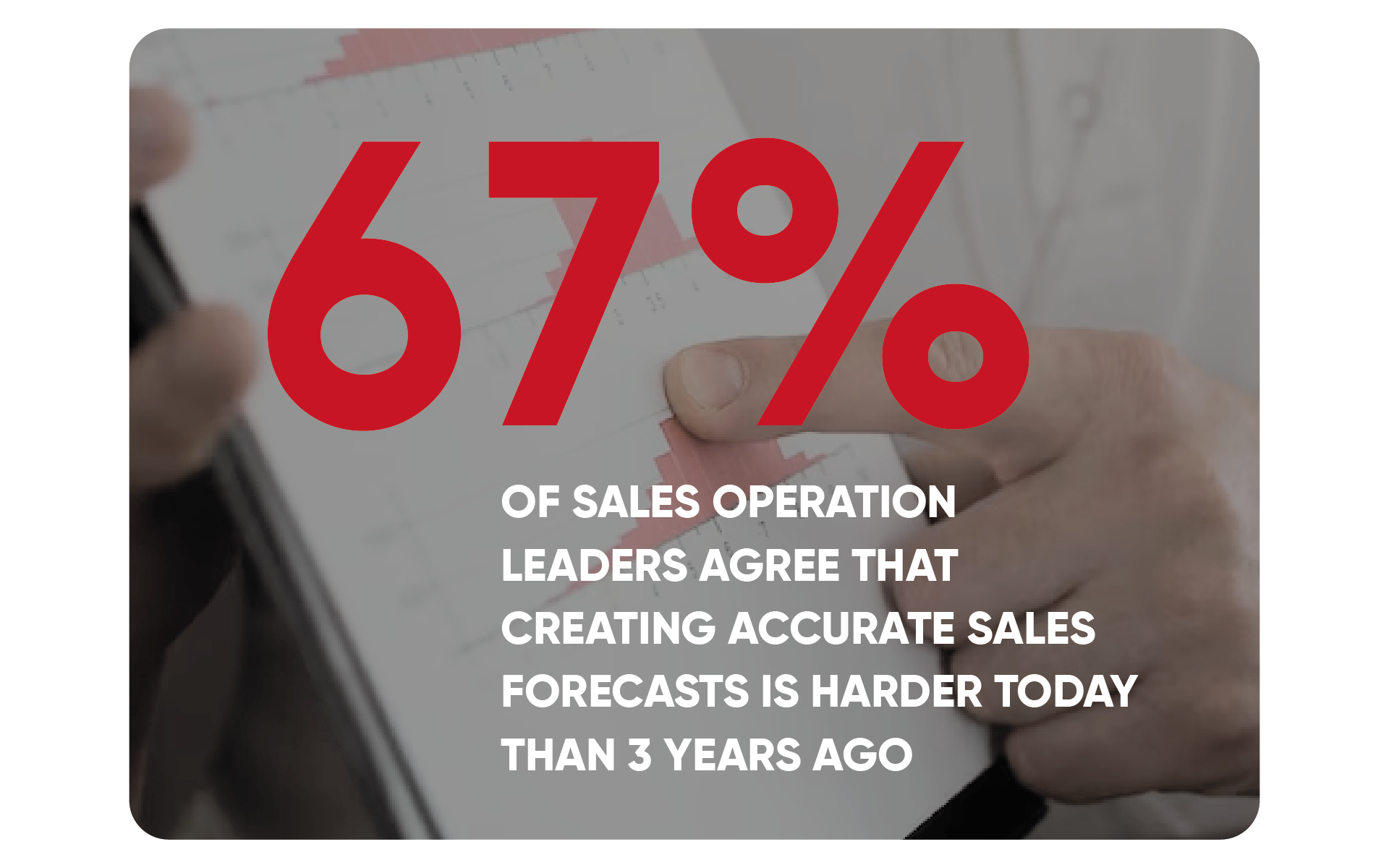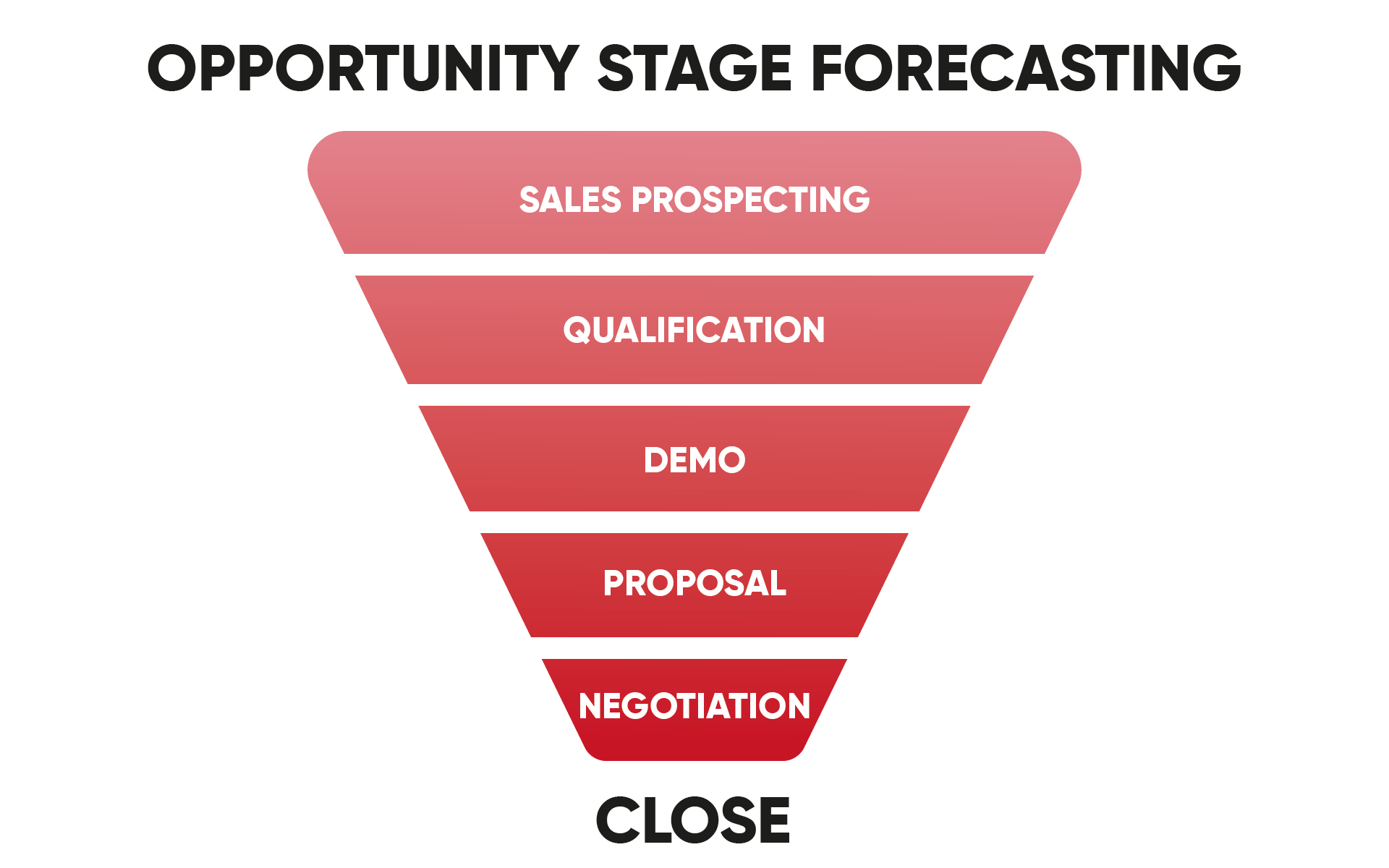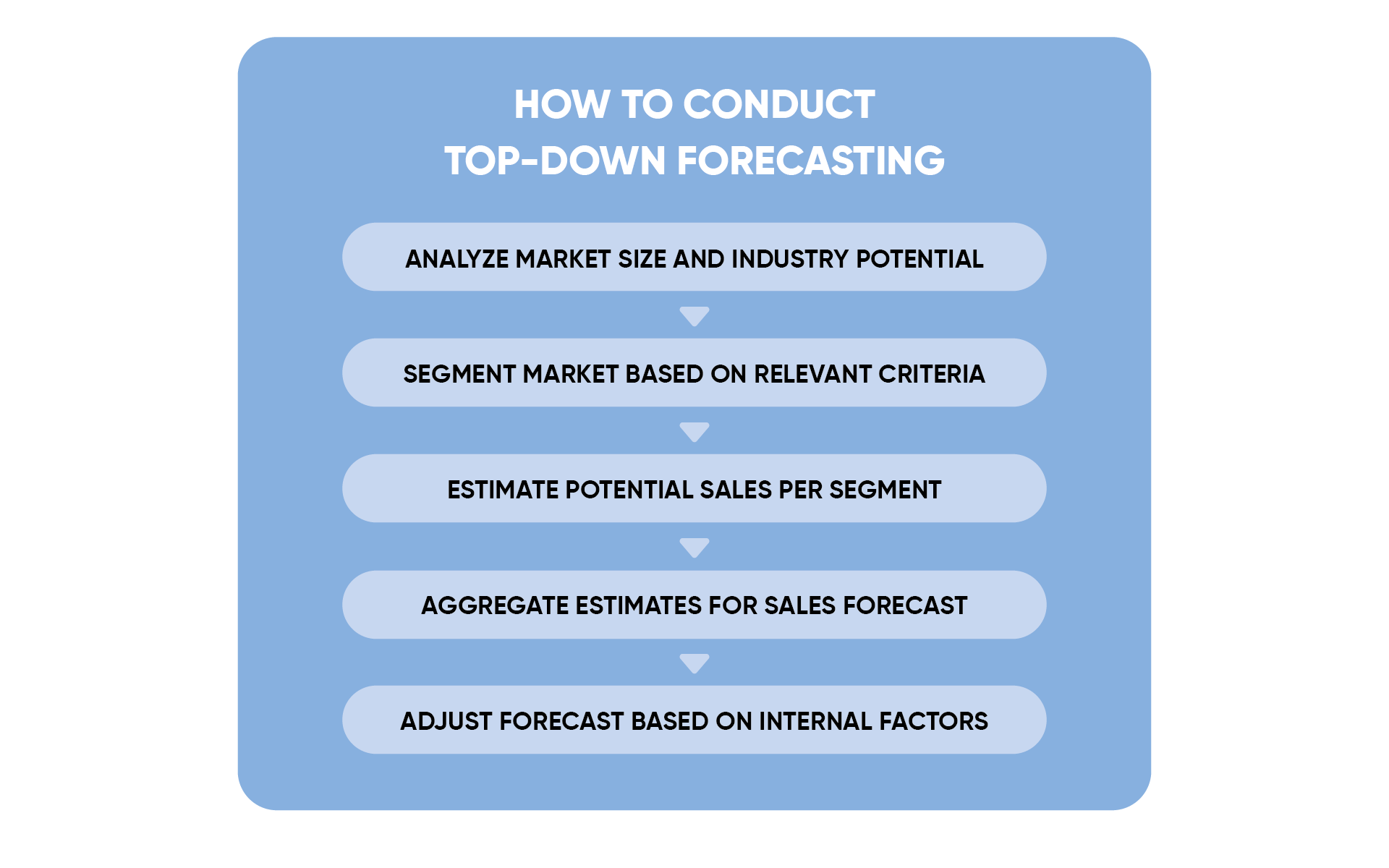9 Types of Sales Forecasting Methods for Building Stronger Relationships with Customers
The benefits of sales forecasting are widespread. There’s the obvious advantage of being able to predict future sales revenue (which comes with its own benefits). But there are numerous types of sales forecasting methods to choose from. So, the question is, how do you know which one to use and when?

Table of contents:
What Is Sales Forecasting?
How Sales Forecasting Improves Customer Relationships
9 Types of Sales Forecasting Methods
Choosing the Right Sales Forecasting Method
Forecasting Should Be a Part of Business Operations
What Is Sales Forecasting?
Sales forecasting is the process of leveraging data to estimate future sales performance and gain insight into where your business should invest its efforts.
Anyone on your team can take ownership of this, though it’s usually done by sales managers, sales reps, or even product leaders. More importantly, the results will empower every department across the company, helping finance teams predict revenue and marketing teams allocate campaign budgets.
Regardless of who conducts the forecast, they should look to answer two key questions: How much will a given sales prospect make for the company? When does your team expect to bring in that revenue?

To answer these questions, your team gathers data from various internal and external sources. Internal data – product lists, pricing, and sales figures, for example – should be readily available as chances are you already store this in a database.
But external data about competitors, consumers, and the industry will require a bit more effort to gather.
Here are a few key sources you should consider:
- Historical data: If your company is well-established, you should have years of previous sales to draw from. This is a great foundation for building a forecast but should be measured for accuracy against current sales figures.
- Market research: For context, consider your competitors’ products, target customers, and pricing as well as consumer behavior and buying trends. While these can be difficult to predict, insights from consumers, industry reports, and your sales team’s intuition will help guide your forecast.
- Sales cycle: Pipeline forecasting should consider the amount of time it takes sales reps to complete a sales cycle, from initial contact to closing the deal. This will help you make a more accurate forecast for a given period, whether that’s a month, quarter, or year.
- Team performance: Data is one thing, but how well is your current team performing? The answer could impact the input and results of your analysis. If you have new team members or new trends means sales tactics need to be adjusted, this could impact future predictions.
- Economic conditions: The economy can be unpredictable but it’s one external factor that can significantly impact sales goals. Stay on top of economic trends to guide your predictions – that might mean adjusting prices during a recession – and re-forecast on a regular basis (quarterly) to take changes into account.
How Sales Forecasting Improves Customer Relationships
From analyzing sales funnels to identifying products that are underperforming or not meeting customer demands, accurate sales forecasts connect us with our customers and build stronger relationships, driving business decisions and leading to a better experience.
A few ways forecasting does this is by:
- Deepening your understanding of customers: Analyzing customer behavior, past purchasing habits and future buying trends makes you better able to meet their needs in the future.
- Optimizing your marketing efforts: Forecasts offer better insights into customers and the market so you can create campaigns and messages that resonate at the right time.
- Allocating resources and inventory: When you know there’s a busy season ahead, you can increase staff or manage stock levels so you can keep up with demand. The result of optimal planning and efficient inventory management is increased customer satisfaction and a smoother customer experience.
9 Types of Sales Forecasting Methods
There is no one-size-fits all approach to forecasting. There are numerous approaches, so it’s important to choose which is best for you depending on your market and goals. Here are nine of the most effective techniques.
1. Time series analysis
Time series analysis leverages historical sales data to understand product performance over a specific period and build forecasts for future sales. It typically measures multiple years of successive sales data so you can spot patterns over a period and analyze:
- How many units do you predict you’ll sell each day/month/quarter?
- Which products are growing?
- Which are declining in sales?

The drawback of a time series analysis method lies in using the past itself. New companies that don’t have baseline data won’t find much use for this model. Plus, by relying on historical sales, we infer that the future will be broadly the same.
Considering the multiple global shocks in recent years and the resulting change in economic factors, this might not be a viable solution for certain industries.
2. Regression analysis
Regression analysis follows a similar concept to time series analysis, relying on historical patterns as the core resource in the analysis.
Where regression analysis differs, however, is in linear regression techniques to create mathematical correlations between various data points over time.

The analysis goes beyond your own sales data, and can incorporate other sources, such as:
- Customer sentiment and behavior
- Market conditions
- Economic factors
- Competitors
- Industry marketing trends
This method is thorough and precise. Visualizing different variables allows you to see what is impacting your sales at any given time. That said, it can be complex as it relies heavily on accurate, clean data and creates detailed mathematical equations to make estimates.
If you operate a small business with limited data, this may be manageable using a tool like Excel. However, if you’re inputting large data sets, sales forecasting software will help you make the most of this method.
3. Sales pipeline analysis
Sales pipeline analysis, also known as opportunity stage forecasting, homes in on the customer pipeline to get clear predictions about the likelihood of a deal closing and predict future demand.
Factors this method takes into consideration include:
- Popularity of products and services
- Customer sentiment
- Current consumer buying trends
To follow this method, your team would investigate the various stages of your pipeline, from lead prospecting to qualifying and closing.
You’d then compare data from previous purchases, looking at success rates for each stage, to gauge whether a deal is inevitable and how much revenue that deal will generate.

This is most effective for businesses that engage with customers over longer periods, such as in real estate or SaaS. This type of analysis has benefited from advancements in machine learning, with particular ML models growing in knowledge over time, providing a deep understanding of the customer journey.
4. Market research
Market research is a tried-and-tested approach that gives you the foundational data and insights that feed into your sales forecasting. Using this method to gather external data will go a long way in helping you better understand your competitors, address your customer’s needs, and improve marketing campaigns.
This method is ideal if your goal is to:
- Understand market trends: Digging into the market’s historical patterns, current trends, and future predictions indicates how these factors may impact sales.
- Improve customer insights: Market research indicates changes in consumer behavior, buying habits, and shopping preferences – information that can inform your sales forecasts.
- Measure your company against competitors: A key element of market research is conducting a competitor analysis. This knowledge about your competitors’ strategies and market positioning will influence sales predictions.
This forecasting process targets potential customers and seeks to understand how products can be better positioned to suit their demands. It can involve a variety of methods, including phone surveys, website polls, or in-person focus groups.
Given that you’re sourcing data directly from your target audience, it’s a highly effective means of finding out what is most important to them.
So, if you’re looking to launch a new product, expand into a different market, or identify emerging trends to guide product or service development, this method is a great option.
For example, if you own a product on a subscription-based model, your market research may reveal a downward trend for subscriptions.

Perhaps internal historical data suggests an increase in subscriptions for the next year. But this trend, as indicated by PWC, may lead you to adjust predicted sales figures. Armed with this information, you can also adjust sales strategies and marketing messages.
For example, you might offer a Freemium model, adjust subscription prices, or focus ads on features that are perceived as more valuable.
5. Expert opinion
This qualitative method sees businesses seek the advice and predictions of industry experts. The aim is to gain a stronger understanding of your company’s position compared to competitors and where consumer sentiment lies.
Insights from industry professionals are particularly valuable for product launches and market expansion. But if you operate in a particularly complex industry where the market is constantly changing or have access to limited data, you’ll also find this beneficial.
That said, it relies on experts with specialized knowledge. They should have in-depth insights into industry dynamics, your target audience, current economic conditions, market trends, and future predictions.
If you choose this method, keep the following in mind:
- What is your goal? Decide why you’re turning to the experts first, so you know what to ask of them.
- Who will your experts be? While external experts like industry analysts and consultants can be beneficial, you might also consider internal opinions from experienced sales or product managers.
- How will you gather opinions? Different formats include direct interviews and questionnaires, and the Delphi Method.
- How will you implement the data? Remember, this method relies on subjective opinions so results will vary. There’s a high potential for bias if experts have conflict of interest. It’s crucial that you balance out any inconsistencies and use the results alongside quantitative data.
6. Delphi method
The Delphi forecasting method is an extension of expert opinion forecasting but instead takes data from a panel of experts. Each is polled anonymously over a series of rounds. Their responses are then aggregated and shared with the panel following each round.
The idea is to gain a more accurate consensus over each round, which ensures stronger outputs and recommendations. If most experts' opinions align, this is a strong indication that you can trust their insights.

This method is widely used by businesses. But in the context of sales forecasting, it will help you refine expert opinions on everything from market trends and economic conditions to consumer behavior and other factors that influence sales forecasts.
Like the expert onion method, the Delphi method is best suited to companies with limited data or those facing a complex market where uncertainty is high. If you’re focusing on long-term forecasting, this is a great option.
7. Test market analysis
Test market analysis introduces a new product or service to a limited geographic area or targeted market segment.
That might mean offering a limited run of stock, only selling in select stores, or conducting a regional test in the case of larger companies. Either way, the goal is to measure the new product’s sales performance before committing to a wider launch.
Test market analysis is useful to understand the appetite for new products or as part of a longer-term strategy to increase awareness and promote future penetration of a target market.
Here’s an overview of the steps you would take:
- Select test markets: Choose geographic areas or demographic segments that reflect your broader target market.
- Launch the product: Introduce your offer to your chosen test markets.
- Collect data: How is the product performing? Consider data on sales volume, customer feedback and responsiveness, and market penetration, gathered from point-of-sales systems, surveys, and market research.
- Analyze the data: Evaluate sales and customer feedback to identify patterns and trends that will help predict future sales when you officially launch.
- Conduct a forecast: Use your insights to predict how the new product will perform on a larger scale. Don’t forget to adjust your forecast in line with external factors.
- Decide: What do your results indicate? Perhaps you’re ready for a full-scale launch. Or it may be that you need to make product improvements, adjust your marketing strategy, or halt the launch altogether.
For example, a telecoms company might launch a VoIP service in a new region. After analyzing the performance, they might realize customers don’t understand the technology behind or benefits of VoIP calls.
As a result, they might design marketing materials addressing a key question: What is voice calling? When rolling out the wider launch, teams will have clear messaging to engage customers and increase sales.
8. Top-down forecasting
In top-down forecasting, you take a wide view of your market or industry, then break it down into smaller segments to help predict sales for a particular product, region, or time period.
Mostly used to get a broad understanding of market viability and overall sales projections, it doesn’t consider nuances within the industry or your business. It also doesn’t consider your customers’ specific preferences as much as other methods.
However, much like other qualitative methods, it’s beneficial for companies that lack detailed historical data or are launching new products with limited information about past performance. It gives you a bird’s eye view of the market to make a reasonable estimate of revenue so you can plan resources accordingly.
There are a few steps involved in this method. Start by analyzing your market, evaluating factors like total sales and growth rates. From here, you can divide your market into relevant segments and estimate sales for each segment.

To calculate revenue, multiply the market size – the total revenue opportunity in your specific market – by the market share assumption – an implied percentage of your market share.
Most companies use this technique in tandem with bottom-up forecasting, which will give you a more granular perspective for a more accurate sales forecast.
9. Bottom-up forecasting
Bottom-up forecasting takes valuable data from multiple ‘ground-level’ sources. It then combines them to create a bigger picture of a business’ performance and make accurate predictions for the future.
The results of this method are highly detailed, giving you greater insights into how various aspects of the sales process are performing. It can also be a trustworthy source of forecasting future revenue, given that it relies on actual sales and quantifiable customer conversion rates.
As with all methods, this process starts with gathering data, but this time on a micro-level. Sources might include:
- Sales data for individual products
- Sales performance data from individual sales reps or teams
- Sales figures from a specific store or region
- Historical sales figures for specific customers or accounts
Once you have this data, you can dig into trends, such as year-on-year changes and peak sales periods. You can use your CRM’s analysis or forecasting feature to do this, as chances are you’ll have collected a lot of data.
Make projections based on the detailed analysis, estimating future sales for each product, customer, sales rep, and region. Combine your projections from each individual store or region to generate an overall sales forecast, and make any adjustments as needed, based on external factors.
If your business has diverse product lines or sells through multiple channels, this method is a great option. It may be more time-consuming and data-intensive than other methods we’ve listed, but the detailed insights you gain will result in a much more robust forecast.
Choosing the Right Sales Forecasting Method
Given the number of unique methods available to choose from, it’s vital that you understand what factors will affect your decision. Some methods work better for specific industries or markets, while others will rely on in-team expertise to get the most from them.
Keep in mind that various departments within your business will feel these impacts differently. Consider how these variables affect your sales and marketing teams when deciding on a forecasting approach.
Data availability and historical trends
For younger businesses, gaining access to large volumes of historical data might be out of the question.
Unless a fledgling business has set up robust data collection and management platforms – such as a Hadoop file system – from day one, there is a high likelihood that any data they do have is not sufficient to support many of the data-driven forecasting methods.
Furthermore, historical trends rely on consecutive blocks of information to work effectively, and longer periods available for analysis directly translate into more concrete recommendations. Consider the maturity of your datasets before committing to a forecasting method and opt for approaches that align with your current situation.
To combat this, ensure your business has quality data capturing processes in place from day one. You can also source data from other businesses in your industry to fill in gaps in your datasets for use in analysis.
Industry and market fluctuations
Some forecasting methods are not resistant to unexpected industry or market fluctuations. For example, time series analysis is particularly susceptible to providing poor-quality insights if historical data includes periods of fluctuation.
COVID-19 is a prime example of this - any data from that time period will differ drastically from periods before and after, and forecasting approaches that don’t consider this will be negatively impacted.
Sales team expertise and CRM integration
Expert opinion forecasting and test market analysis tend to rely on the strength of your internal team - both their knowledge of the industry and the customers themselves. If your business is lacking in expertise, these forms of forecasting will be ineffective and lead you down the wrong path.
CRM integration is another key factor to consider. Different CRMs come equipped with various integration tools that can help or hinder your ability to capture and manipulate data for analysis.
Effective integration with each platform to your CRM will save time and money, so be sure to review the capabilities of your chosen CRM and data collection tools for compatibility.
Forecasting Should Be a Part of Business Operations
With the forecasting methods discussed here, you can explore future strategies for your sales reps and marketing teams through the power of the past.
Accurate sales forecasting should become a consistent part of business operations and we recommend regularly reviewing the data to find fresh insights as soon as they make themselves known.
As with all business practices, focus on driving quality customer experience over other secondary factors and look to grow in a measurable and sustainable way.











